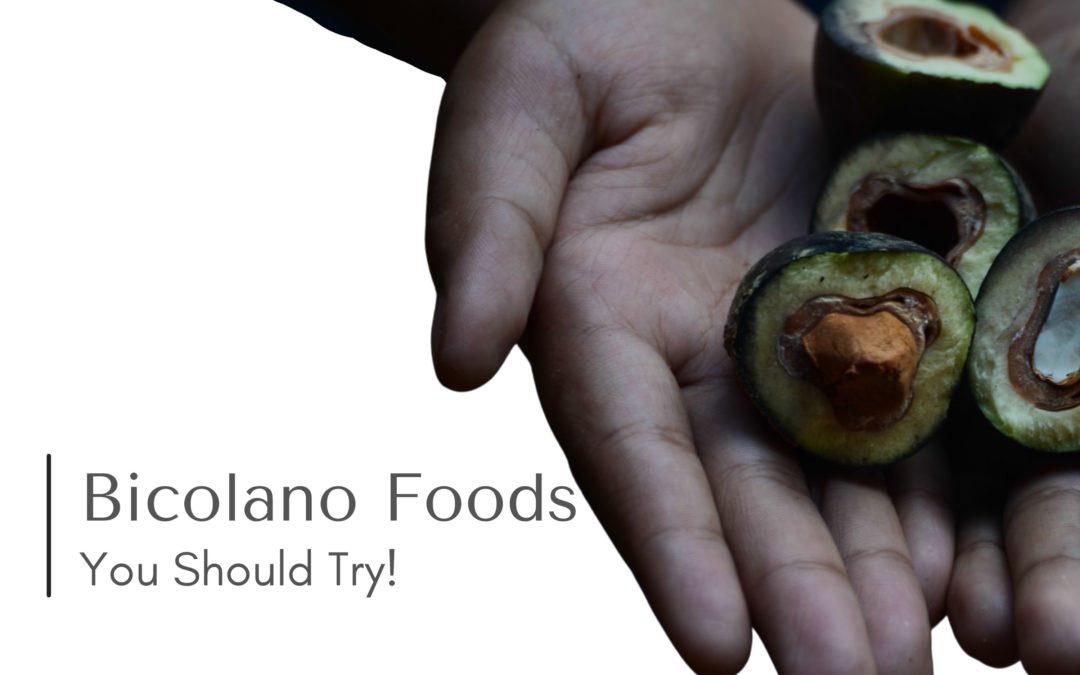Bicol is a must-see destination if you’re planning a trip to the Philippines. The Bicol region is known for its warm, welcoming people and its rich culture—including its food!
The region’s history influences the cuisine of Bicol: it was originally ruled by three different cultures: Chinese, Spanish, and Muslim. As such, there are many unique dishes that you won’t find anywhere else in the world.
To complete your travel experience in Bicolandia, here are some of the top Bicol food that you should try when you visit this beautiful and magnificent place.
Key Takeaways
If Bicol Region is fresh to your ears, you would probably wonder what kind of foods this region offer. So in this blog, we will discuss three categories such as Bicolano dishes, snacks, and desserts. Some of these foods even have variations depending on how it was cooked and prepared. And for you to be able to understand more about the food, you can check our mini index at the end of the page to understand the terms better. Thank us later!
Bicolano Foods In A Nutshell
- Bicol Express
- Laing, Pinangat, and Tilmok
- Kinunot
- Kandingga
- Sinantolan
- Ginataang Labong and Ubod
- Picadillo or Sinanglay
- Kusido
- Boiled Pili Fruit
- Pancit Bato
- Kinalas
- Nilubak or Nilupak
- Rice Puto Bukayo
- Biniribid or Chakoy
- Sinapot / Baduya / Maruya
- Toasted Siopao
- Toasted Puto of Oas
- Marcasotes
- Pili Nut Candies
- Tiwi Halo-halo
- Sili Ice Cream
Dishes
In this category, you will learn what are the dishes that make every Bicolano happy, satisfied and full when having lunch or dinner.
Bicol Express
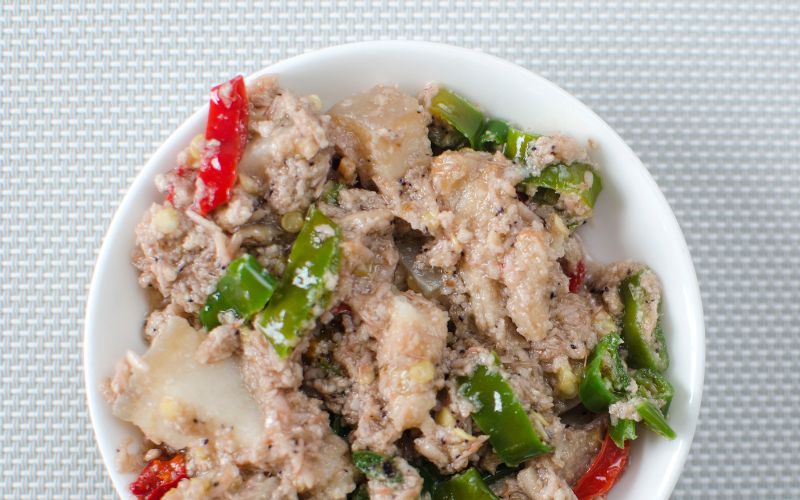
From the name itself “Bicol Express”, this dish is the most popular cuisine in Bicol Region.
It is natively known as “Sinilihan” because it is made with lots of long chilies that will make you think it is the only main ingredient. Actually, it is made with pork, “balaw” or shrimp paste, and “gata” or coconut milk.
Image Source: Eunice Vallesteros via Canva
#eXcitingfacts
This dish did not really originate from Bicol but from Malate and Bicolanos adapted it and made their own version that makes it a popular Bicolano Cuisine.
Laing, Pinangat, and Tilmok
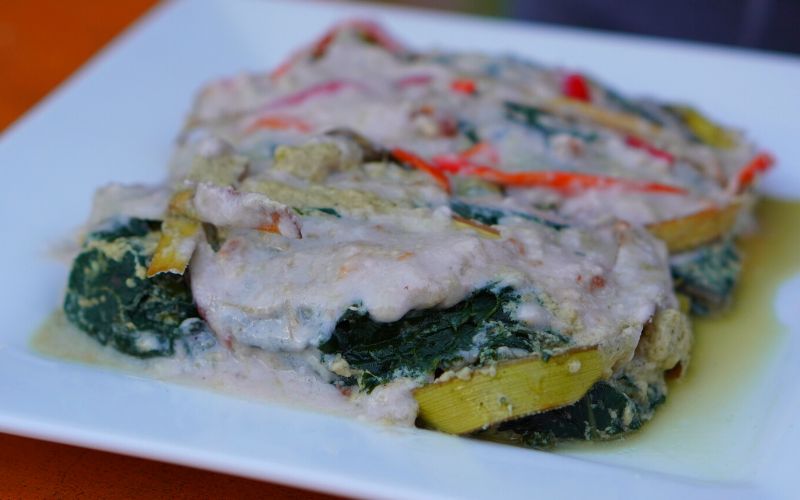
Some say these three are just the same. But did you know, although they are all made with taro leaves and gata, they actually have differences?
Laing is shredded taro leaves cooked in gata and can be cooked with pork, “tinapa” or smoked fish, or just balaw. It can also be cooked with the combination of all mentioned ingredients plus “siling labuyo” or hot chili.
While Pinangat is whole taro leaves stuffed with shredded taro leaves, pork or tinapa, and balaw. It is cooked and topped with thick coconut milk.
Tilmok or Inulukan on the other hand is cooked the same as Pinangat but it is stuffed with crab meat or shrimp and “lukadon” or young coconut meat instead of pork or tinapa. Can be also spiced with calamansi, black pepper, and lemongrass. Both though can be also cooked with siling labuyo. Come on, Bicolanos always put sili on their dishes.
Now you know the difference among these three!
Kinunot

Kinunot is another traditional Bicolano dish made with a combination of stingray or shark meat, coconut milk, malunggay or moringa, onions, garlic, and of course hot chilies.
I can still remember there’s this one joke from a fellow Bicolano that if ever you are swimming in the ocean, do not forget to bring moringa leaves so that if you see a shark, you can just show it the leaves and it will swim away. Lol.
Image Source: Lutong Bahay Recipe
Kandingga or Bopis
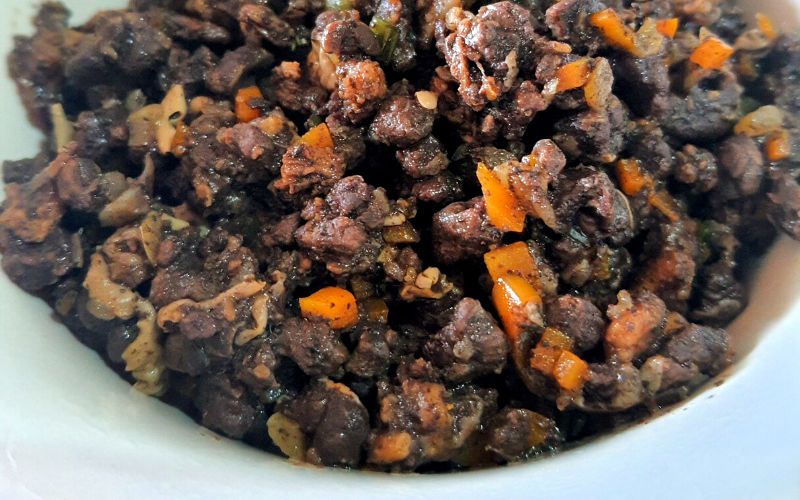
Sometimes goat, sometimes beef, usually pork heart, lungs, spleen and other offal cooked in vinegar. Can be cooked with vegetables like “kangkong” or water spinach, radish, and carrots. Others put coconut milk as common to Bicolanos but some are fine with just topping it with hot chili.
Personally, when I eat Kandingga, I pair it with a glass of iced soda. The combination of the dish’ spiciness and the soda’s coldness is just perfect!
You can also have a taste of my favorite Kandingga by contacting my mother-in-law, Nemia Ogsila at +63912 986 5498. Her Kandingga is the best for a very affordable price!
Sinantolan
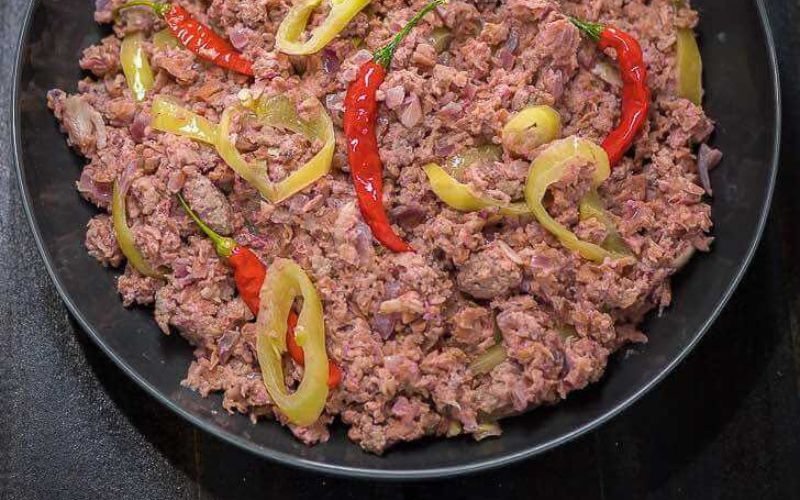
I bet you never thought a fruit like a santol or cotton fruit can be cooked as a dish. Well, this blog will give you another perspective on this fruit.
Sinantol or Ginataang Santol is an underrated Bicolano dish but one of the region’s unique cuisines. It is another dish cooked in coconut milk, together with smoked fish or shrimp paste and finished with a topping of hot chili to make it spicy.
Amazing Santol, isn’t it?
Image Source: Panlasang Pinoy
Ginataang Labong and Ginataang Ubod
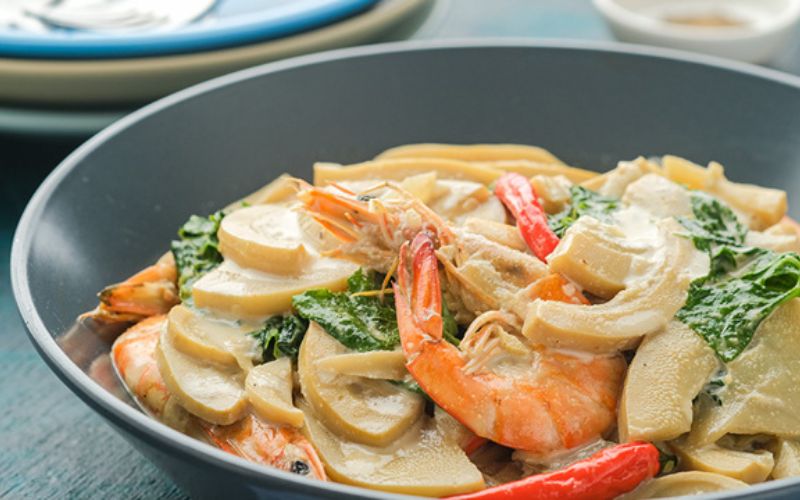
Can’t get enough of ginataan dishes? here’s another entry!
Ginataang labong, also known as ginataang tambo, is a Bicolano vegetable stew typically cooked with bamboo shoots, coconut milk, and spices, and served with fish, crab meat, or canned sardines. Ginataang ubod is a variation of the meal that uses banana pulp instead of bamboo shoots but otherwise follows the same concept.
Image Source: Yummy.Ph
Picadillo or Sinanglay
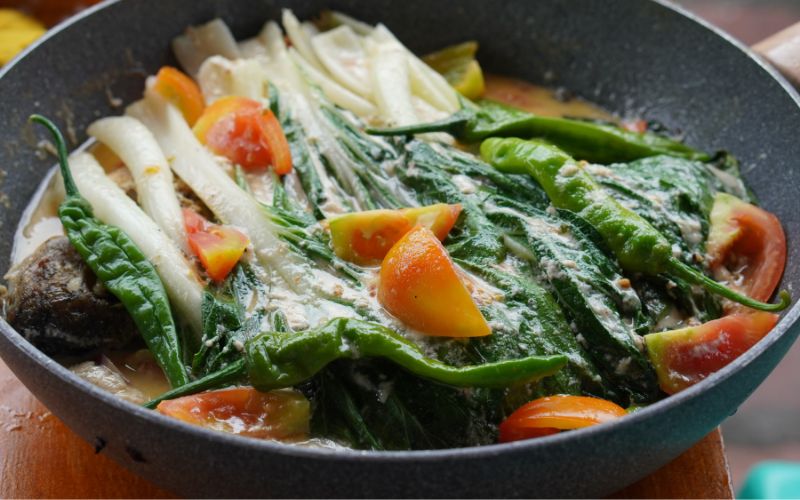
Last but not least on cooked-with-gata Bicolano Food dishes — the Picadillo Bicolano version!
Yes, you are looking at the right pic. Bicolano Picadillo is not the Latin-American traditional dish that is made with ground meat, tomatoes, raisins, olives, etc. So if you are living outside Region V, it’s time to learn how Bicolano Picadillo is made.
Wrapped in pechay, the fish, (commonly tilapia), is stuffed with tomato, garlic, onion, ginger, and chili which gives it a variety of flavors. And correct! It is cooked once again in our famous gata or coconut milk that’s why you ‘gata’ try this dish soon!
#eXcitingfacts
Did you know that in Manila, Picadillo is a different dish than of Bicol’s. Manila’s Picadillo is a ground pork cooked with potato and carrots tidbits.
Kusido
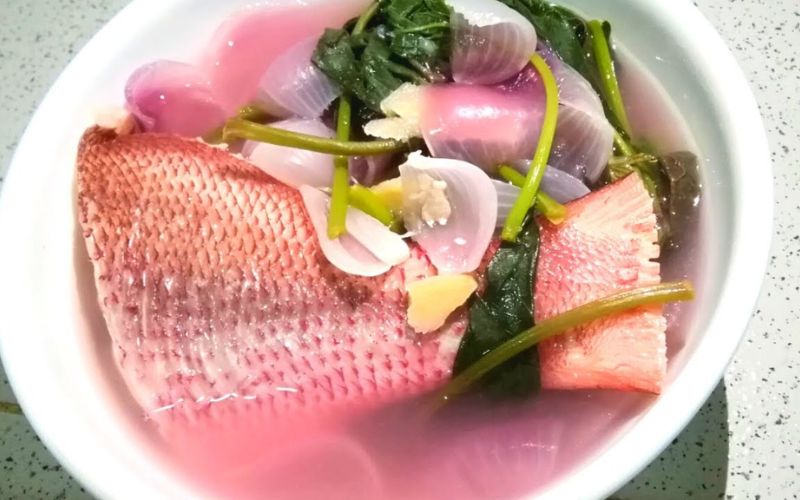
Enough of gata dishes and let’s go to something tangy and soupy.
Kusido is the Bicol version of Sinigang. Instead of “kangkong” or water spinach and other vegetables like eggplant, string beans, okra, and radish, Bicolanos only use “talbos ng kamote” or sweet potato tops. Sometimes they use malunggay as a substitute. And instead of using tamarind, they use calamansi to give a mild sour taste. Tomatoes and onions are also present in this dish just like in Sinigang and fish of any kind is the main ingredient.
Image Source: Food Vlogs & Anything
Snacks
Let’s go to this section where your tongue will be thrilled when looking for snacks when you travel to Bicol.
Boiled Pili Fruit
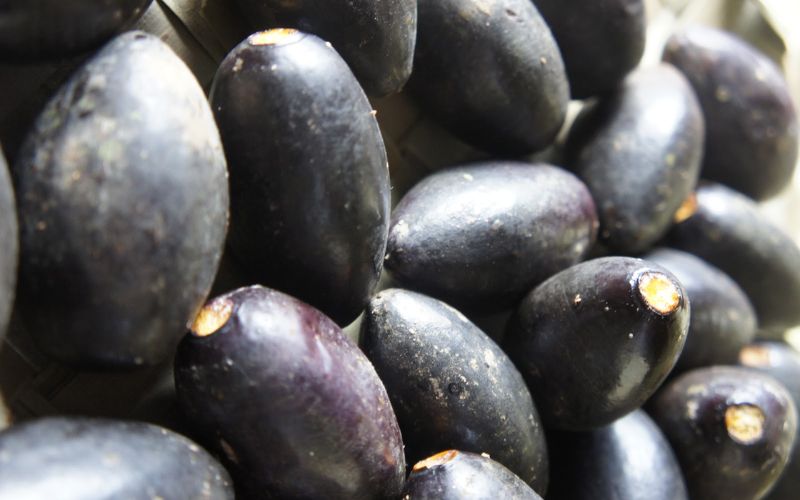
Pili has 5 layers: The peel, the flesh, the shell, the seed’s peel, and the seed. Aside from the seed that can be made candy, the flesh is also edible and can be made for snacks or even a dish!
How to eat boiled pili fruit?
- Wash the raw and freshly picked pili fruit
- Boil to soften or pour it with hot water
- Soak it for 5-10 minutes or until softened
- Once the pili fruit is softened, peel it with your bare hands and you will see its white flesh stained with purple peel
- Dip it to sugar (my choice of dip) or soy sauce with calamansi
- Eat it alone or pair to a cup of hot rice
- Enjoy!
Image Source: Awesome Bulusan
Pancit Bato
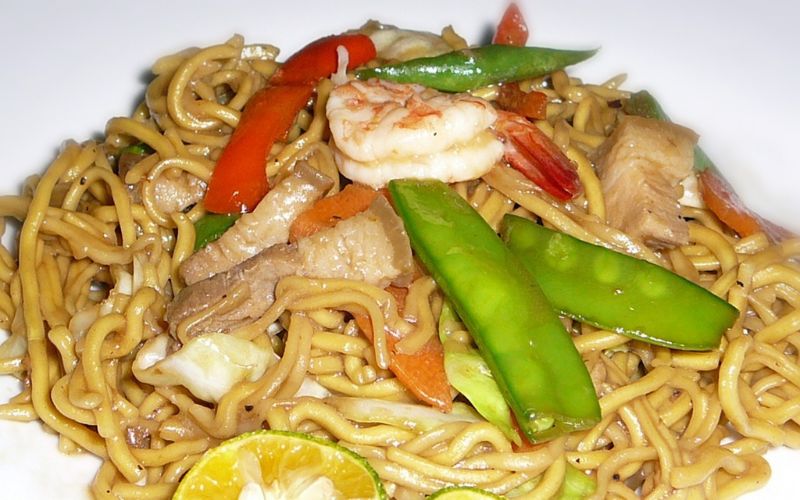
Pancit Bato is not a stone or rock-like kind of pancit unlike what its name “bato” is suggesting. It is a noodle dish that closely resembles pancit canton that actually originated in the province of Camarines Sur in a municipality known as Bato. Yes, that’s where it got its name.
This dried noodle snack is sauteed in garlic, onion, and seasonings and topped with vegetables and meat.
Image Source: Overseas Pinoy Cooking
Kinalas

Kinalas is a Bicol dish consisting of noodles cooked with scraped meat from the head and other sections of pork or beef, and a rich deep-brown sauce made from the brains of a cow or pig. Spices are added to the meal, which is then served in a hot broth. Adding a boiled egg, siomai, and chicharon is optional. It is perfectly paired with “baduya” or banana fritters. This Bicol food originated in Naga, Camarines Sur
Have you ever thought that noodle soup can be this exotic too?
Nilubak or Nilupak
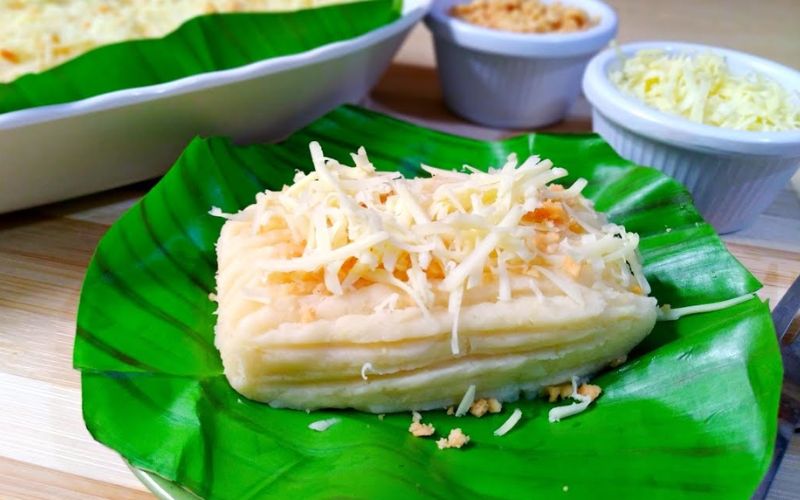
Nilupak is a type of traditional Bicolano delicacy made with pounded cooked cassava or saba (a banana variation) and sugar. They are formed into a variety of shapes and served on banana leaves with nuts, cheese, butter, or margarine as toppings.
Warning: This snack is somewhat addicting.
Image Source: Yummy Kitchen Tv
Rice Puto Bukayo
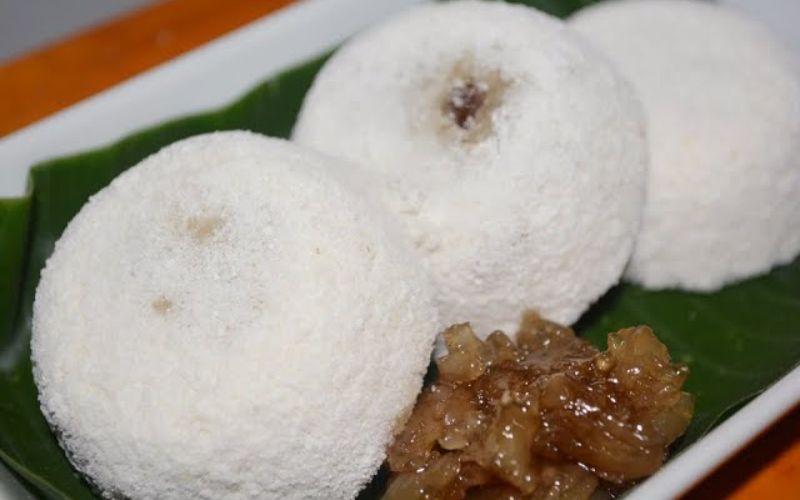
Ligao City’s pride, Rice Puto Bukayo is made with ground rice instead of flour. It is molded roundly and filled with “bukayo” or candied shredded young coconut meat. You will always see this kind of snack anywhere in Ligao City Albay.
Image Source: Ji’s Kitchen
Biniribid or Chakoy

If you know churro and you like it, you’ll probably like Bicolano’s native churro! Biniribid means twisted and this photo obviously tells you where it got its name. Biniribid also is made with rice flour, young coconut meat, and coconut milk. It is deep-fried and rolled in or glazed with caramelized brown sugar.
Tell me you’re not drooling by the looks of it right now.
Sinapot / Baduya / Maruya
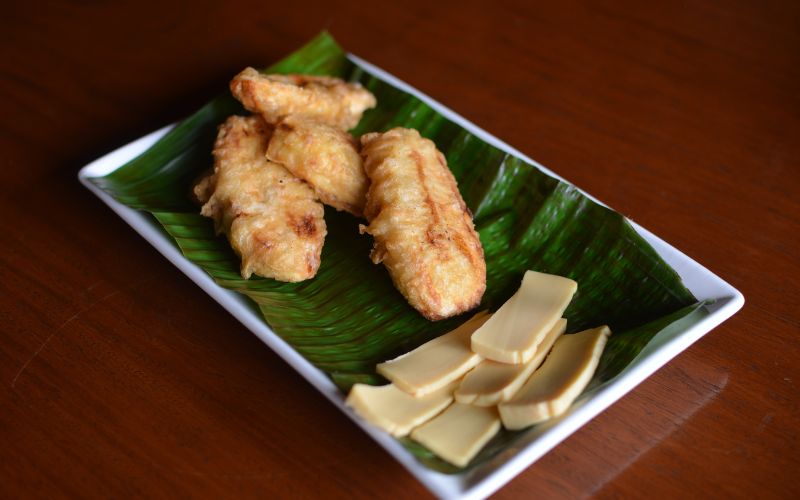
Sinapot or Maruya is made from saba bananas. The most typical variation involves deep frying thinly sliced and “fanned” bananas coated in batter. Some likes it paired with cheese.
Toasted Siopao
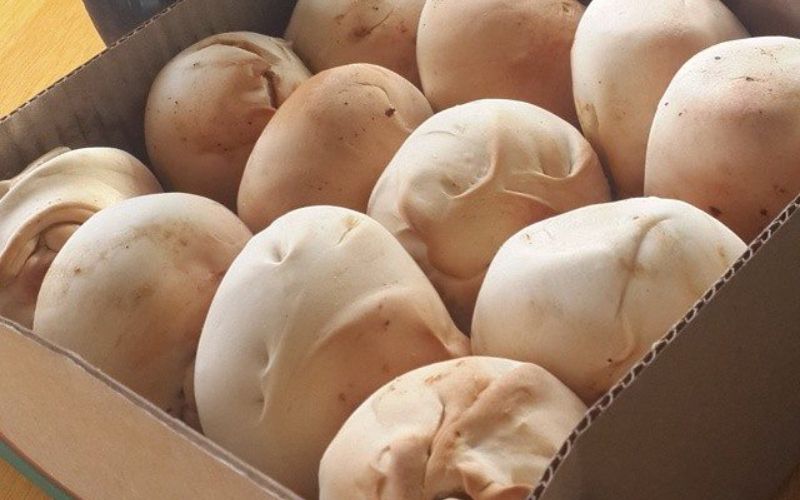
Can you imagine eating a siopao that is not steamed but toasted? How cool is that?! Bicolanos really never runs out of ideas when it comes to giving twists to foods. 3N Bakery is the first to offer the said snacks from its main branch Libmanan, Camarines Sur.
Image Source: 3N Bakery
Toasted Puto of Oas
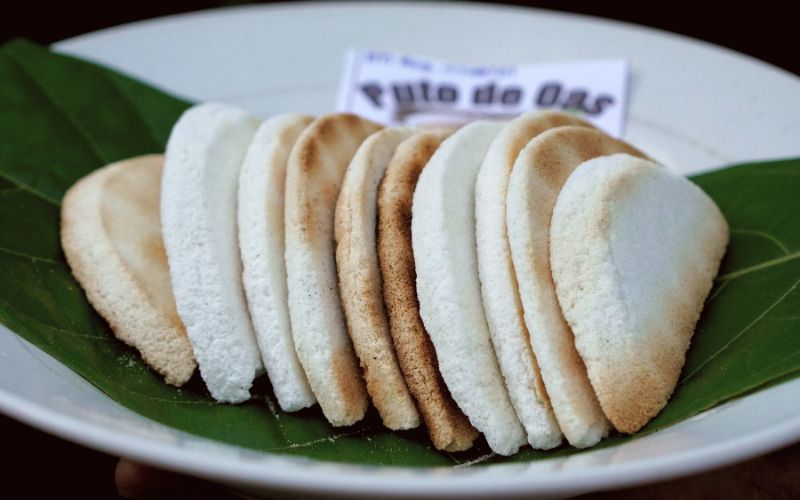
Toasted Puto De Oas is a rice puto with milkmaid, vanilla, and egg yolk as special components. This kind of puto began operations in Mayao, Oas, Albay in 1989 and continues to operate now. It is considered one of the top dishes in the Bicol region and you can see this product being sold in the bus terminals, pasalubong centers, and even at LCC Supermarket, the region’s biggest supermarket chain.
Marcasotes

Very similar to the Portuguese sponge cake Pão-de-Ló, Marcasotes is a native steamed cake cooked in handmade paper bags. They are traditional steamed cakes created using handcrafted paper bags.
A large clay pot (which also functions as an oven) is coated with sliced banana bark at the bottom to provide steam for cooking in the classic method. The subtle smoke flavor of the “gatong” beneath the clay pot lends the native delicacy its distinct flavor and scent.
Desserts
Bicolano desserts are the highlight of a Bicolano meal. They are sweet, savory, and sometimes spicy at the same time, and they come in different forms.
Pili Nut Candies
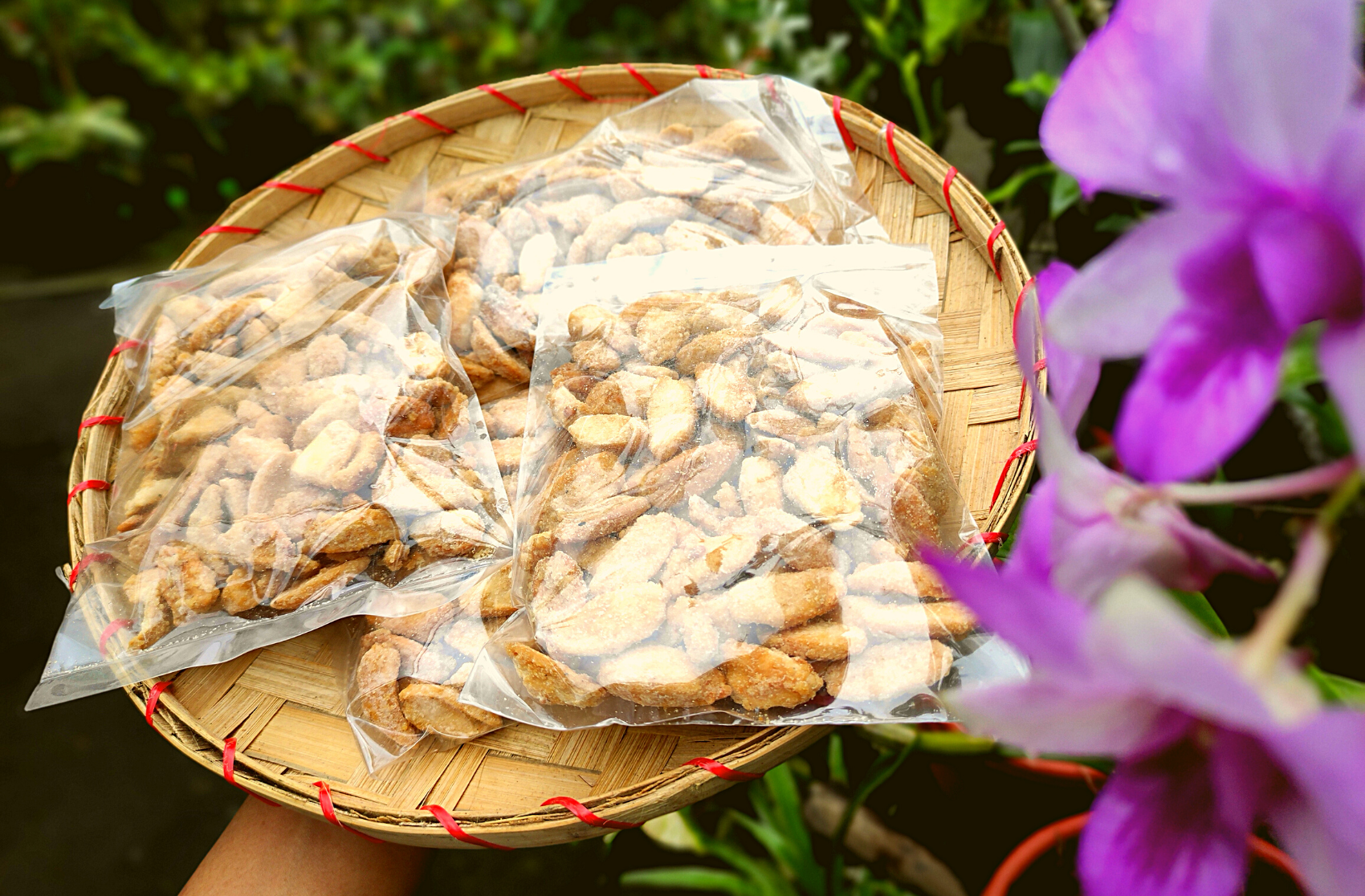
Just like other nuts, Pili Nuts can be versatile when it comes to candies and desserts. It can be the main ingredient and it can be mixed, filled, and topped with other delicious Bicolano desserts. Pili tarts, glazed pili nuts, chocolates with pili nuts, and shakes topped with crushed pili nuts are just a few to name.
Tiwi Halo-halo
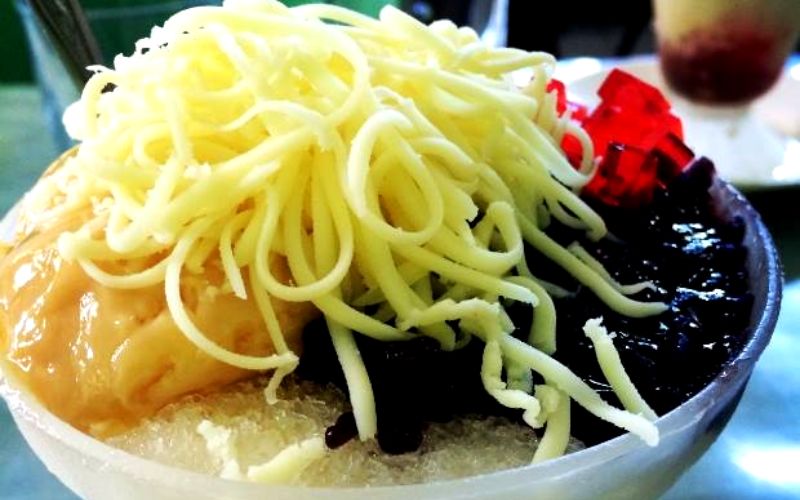
Halo-halo is a common Filipino Dessert but in Bicol, there is one distinct halo-halo that you should never really miss when you visit the region. It’s the DJC Halo-halo in Tiwi Albay. What makes it different as per the people of Albay is that it is super milky and cheesy. Others also say that they do not use just ordinary water because they use coconut water for their shaved or crushed ice. We haven’t confirmed this with the owner yet but it’s a great idea, right?
Image Source: DJC Halo-halo
Sili Ice Cream
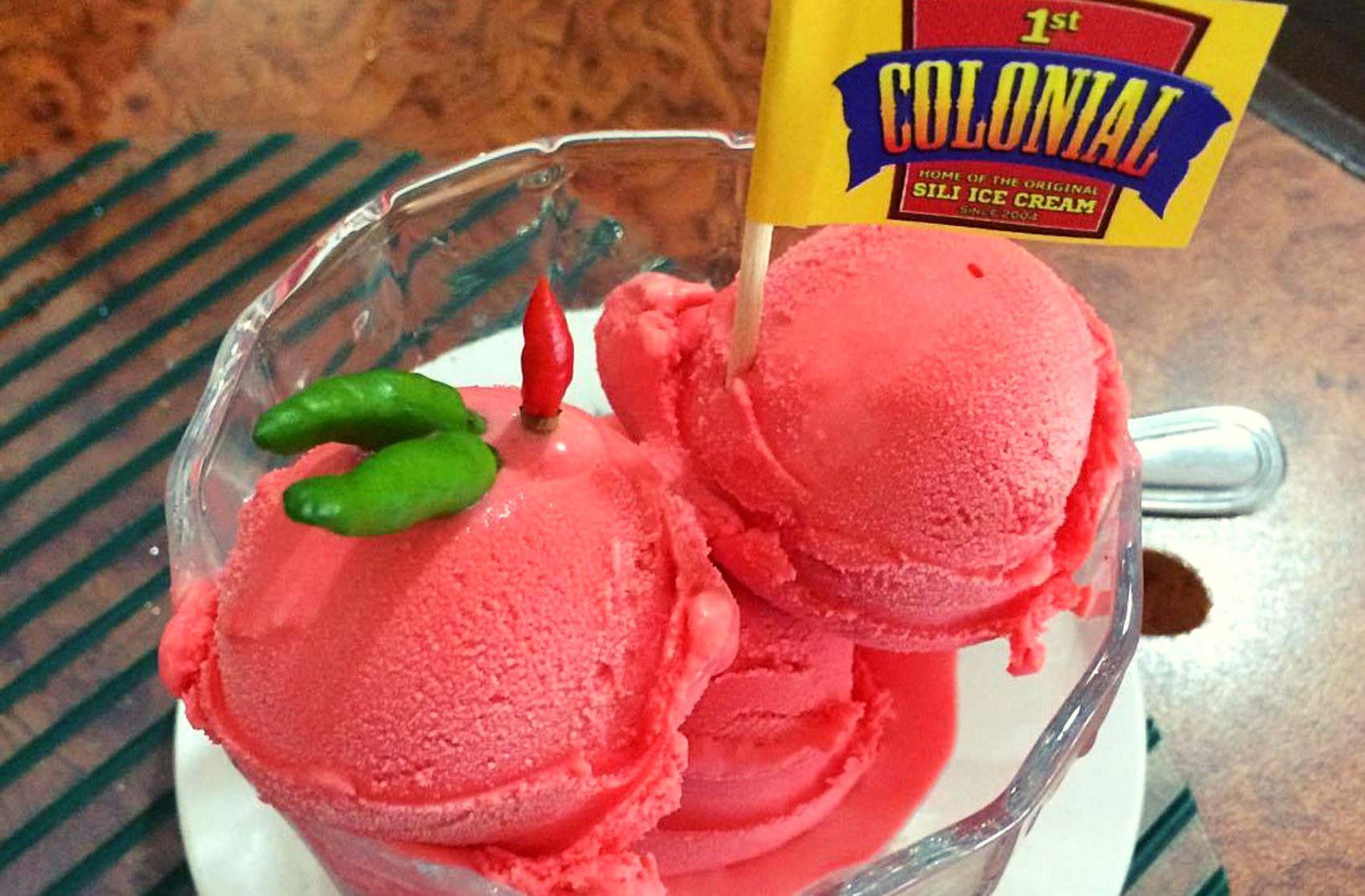
Last but again, not least… The famous Sili Ice cream! 1st Colonial Grill is the one who popularized it together with their other Bicolano-Flavored Ice cream. But as far as we know, it is Small Talk who first invented hot ice cream and they call it Lava Ice cream. Now, chili ice cream is also offered by a few other stores in Bicol, particularly in Daraga Albay.
Image Source: 1st Colonial Grill
FAQS
Where can I buy the best Pinangat?
The home of pinangat is Camalig Albay. When you go to Camalig, make sure to drop by at National Road, Poblacion and you’ll see different stores of Pinangat there. The most famous one is Let’s Pinangat.
In Sto. Domingo, Albay though, there’s a Pinangat Vendor whose products are easily sold in the market of Sto. Domingo, Legazpi, and Old Albay! Her pinangat is the best that we’ve tasted so far and the vendor is called Ate Shawie. You can order from her through: 09704693011
Which Bicol Restaurants offer these Bicolano dishes?
Most restaurants in Bicol offer Bicolano Cuisines but some of the restos we know so far are in Albay. They are:
Balay Cena Una – Daraga Albay
La Terraza Restaurant (The Home of Authentic Bicolano Cuisine) – Ligao City
Sibid-sibid – Rawis, Legazpi City
Kim’s Bowl – Alternate Road, Legazpi City
Nory’s Restaurant – Ligao City
Small Talk Cafe – Old Albay, Legazpi City
Aguas’ Farm and Coffee Shop – Sto. Domingo Albay
Mag’ma Restaurant & Café – Daraga Albay
Casa Simeon – Bacacay Albay
Can I take these foods home as a "Pasalubong?"
Some of these foods can be taken home, particularly desserts like Pili Candies. But if you want some souvenirs for your loved ones, you should check the Famous Products in Bicol That You Should Buy
What are the best food in Albay?
You can check Must-Try Albay Delicacies
MINI INDEX
sili - chili
sinilihan - put with a lot of chilis
balaw - shrimp paste
gata - coconut milk
tinapa - smoked fish
siling labuyo - small but hot chilis
lukadon - young coconut meat
malunggay - moringa
kangkong - water spinach
santol - cotton fruit
ginataan - a dish with coconut milk
labong / tambo - bamboo shoots
ubod - banana pulp
talbos ng kamote - sweet potato tops
camalansi - citrus fruit
bato - means stone or rock but also a municipality in Camarines Sur
pancit - dried noodles
baduya / sinapot / maruya - banana fritters
nilubak - pounded
bukayo - candied shredded young coconut meat
biniribid - twisted
Related Readings
About the Contributor

Mernel
The team’s jack of all trades. An eXtreme introvert but loves nature adventure. She’s afraid of traveling solo though.

Our itinerary is designed to make your travel planning a breeze, whether you’re planning a solo adventure, a romantic getaway, or a family vacation.
- Includes all the essential details you need to make your trip a success. From flights and accommodations to activities and dining options, we’ve got you covered. We’ve handpicked the best experiences and hidden gems to ensure that you have an unforgettable trip.
- Fully customizable, so you can add or remove activities and make changes as needed to suit your preferences. We also provide helpful tips and recommendations to help you make the most of your time at each destination.
- Our itinerary is available in both digital and print formats, making it easy to access and share with your travel companions. With our itinerary, you’ll have everything you need to make your trip stress-free and enjoyable.

